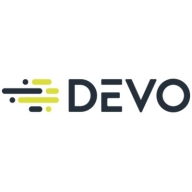

Devo and Elastic Observability compete in the data monitoring and analysis sector. Devo stands out in pricing and customer support, while Elastic Observability impresses with its extensive feature set.
Features: Devo is noted for fast query performance, scalability, and efficient data integration capabilities. Elastic Observability offers a comprehensive feature set with diverse integrations and advanced analytics.
Room for Improvement: Devo users suggest enhancements in alerting functionality, improved documentation, and more intuitive interface options. Elastic Observability faces challenges with setup complexity, requires better training materials, and could simplify its initial configuration process.
Ease of Deployment and Customer Service: Devo is recognized for straightforward deployment and responsive customer service, aided by guided installation. Elastic Observability is less intuitive but has effective customer support for issue resolution.
Pricing and ROI: Devo is known for its competitive pricing and favorable ROI due to lower setup costs. Elastic Observability, while more expensive, provides satisfactory ROI through advanced analytics and features.
| Product | Market Share (%) |
|---|---|
| Elastic Observability | 1.3% |
| Devo | 0.7% |
| Other | 98.0% |


| Company Size | Count |
|---|---|
| Small Business | 7 |
| Midsize Enterprise | 4 |
| Large Enterprise | 11 |
| Company Size | Count |
|---|---|
| Small Business | 8 |
| Midsize Enterprise | 4 |
| Large Enterprise | 16 |
Devo is the only cloud-native logging and security analytics platform that releases the full potential of all your data to empower bold, confident action when it matters most. Only the Devo platform delivers the powerful combination of real-time visibility, high-performance analytics, scalability, multitenancy, and low TCO crucial for monitoring and securing business operations as enterprises accelerate their shift to the cloud.
Elastic Observability offers a comprehensive suite for log analytics, application performance monitoring, and machine learning. It integrates seamlessly with platforms like Teams and Slack, enhancing data visualization and scalability for real-time insights.
Elastic Observability is designed to support production environments with features like logging, data collection, and infrastructure tracking. Centralized logging and powerful search functionalities make incident response and performance tracking efficient. Elastic APM and Kibana facilitate detailed data visualization, promoting rapid troubleshooting and effective system performance analysis. Integrated services and extensive connectivity options enhance its role in business and technical decision-making by providing actionable data insights.
What are the most important features of Elastic Observability?Elastic Observability is employed across industries for critical operations, such as in finance for transaction monitoring, in healthcare for secure data management, and in technology for optimizing application performance. Its data-driven approach aids efficient event tracing, supporting diverse industry requirements.
We monitor all Log Management reviews to prevent fraudulent reviews and keep review quality high. We do not post reviews by company employees or direct competitors. We validate each review for authenticity via cross-reference with LinkedIn, and personal follow-up with the reviewer when necessary.